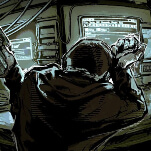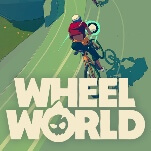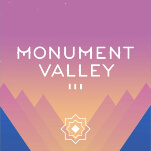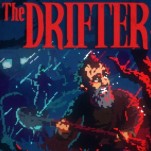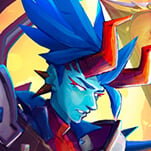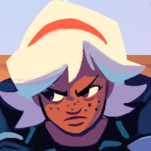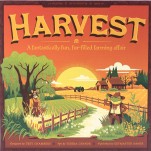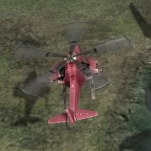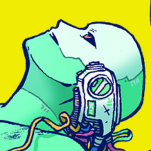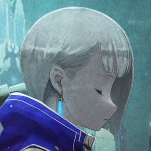Obduction Trusts Us to Unlock Its Mysteries

Several hours into Obduction—the latest game from Myst developers Cyan Worlds—I stumbled upon an elevator hidden at the top of a cliffside amidst the desert mining town of Hunrath. I could have mistaken Hunrath for John Ford’s beloved Monument Valley if it weren’t for the purple, alien mountains towering over it on all sides. I’d made it to the top of this cliff in roundabout fashion. I’d undammed a waterfall; I’d used the creek that waterfall unleashed to operate a swing-bridge; I’d restored basic electricity to Hunrath and found a… secret passage that let me reach this cliff (I won’t say more for fear of spoiling one of the game’s many surprises). And suddenly here was a tower and an elevator and a strange device that was half high-tech electronics and half ancient rotary phone. It would be another couple hours before I understood what any of this meant.
In the twenty three years since Myst’s release, Cyan’s influence in the “adventure” game genre has begun to dissipate. Developers like Telltale (The Walking Dead) and Fullbright (Gone Home) have replaced an emphasis on puzzles with a focus on emotionally charged narratives. Jonathan Blow’s The Witness was a direct response to the idea that puzzle-driven gameplay is incompatible with a complex, interwoven narrative. And The Chinese Room (Everybody’s Gone to the Rapture) places faith in players’ ability to find meaning and drama through largely environmental narratives. Despite the rapid splintering of the genre, Cyan has found a way to not only embrace the roots of the type of game it helped to create but to also integrate puzzles and narrative with a deceptive degree of elegance.
Obduction begins with an abduction: the player’s. A strange beam of light snatches the player from a contemporary lake to the alien Hunrath at an unknown point in the future. The town is abandoned and players only have a handful of recorded, holographic projections to orient themselves in this mining community. One living soul remains in town, locked in the basement of a workshop that you can’t enter, and although he gives you occasional pieces of advice, the majority of Obduction’s play is wandering around and attempting to figure out not only what happened in Hunrath but how you now fit into this new scheme of things.
Obduction commits to this idea of being stranded on an alien world whose history (and physics) you don’t understand in the slightest. If you aren’t willing to spend hours wandering around totally lost, Obduction is going to be frustrating. Minus the occasional goals that the one remaining resident of Hunrath doles out, progress in Obduction is mostly up to the player. The game’s playspace gradually expands (I’m being vague again because the game’s gradual increase in scope is one of its best delights and surprises) but even its more limited opening area is large enough for you to spend an hour or so just acclimating yourself to this town. But that space gets larger and it does so very quickly and it does this without any increase in explicit direction for the player. And so you find locked doors or inoperable devices and you hope that the key to making it work is nearby. And if not, you wander around for a couple more hours hoping that inspiration strikes or you’ll figure something else out.
-

-

-

-

-

-

-

-

-

-

-

-

-

-

-

-

-

-

-

-

-

-

-

-

-

-

-

-

-

-

-

-

-

-

-

-

-

-

-

-

